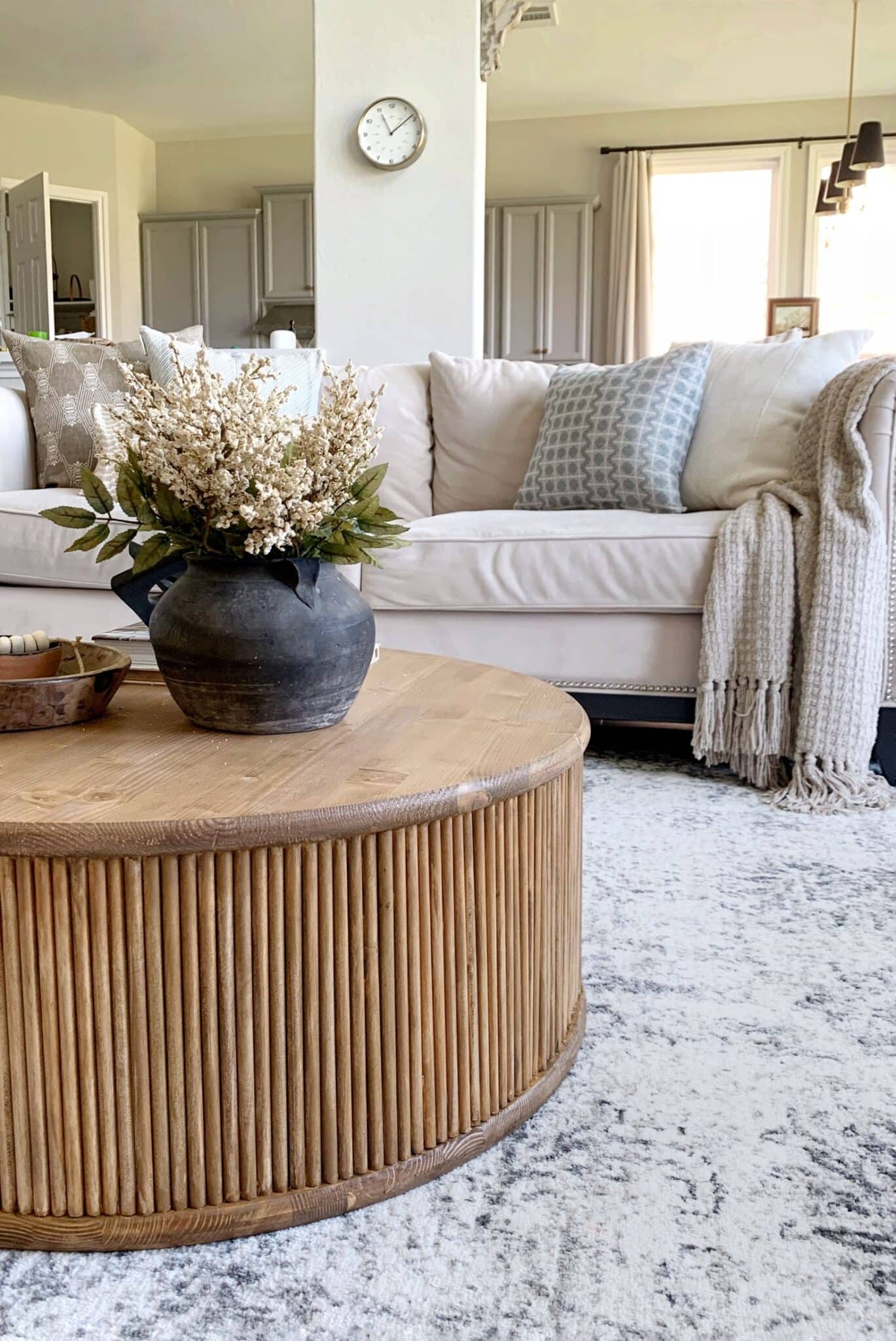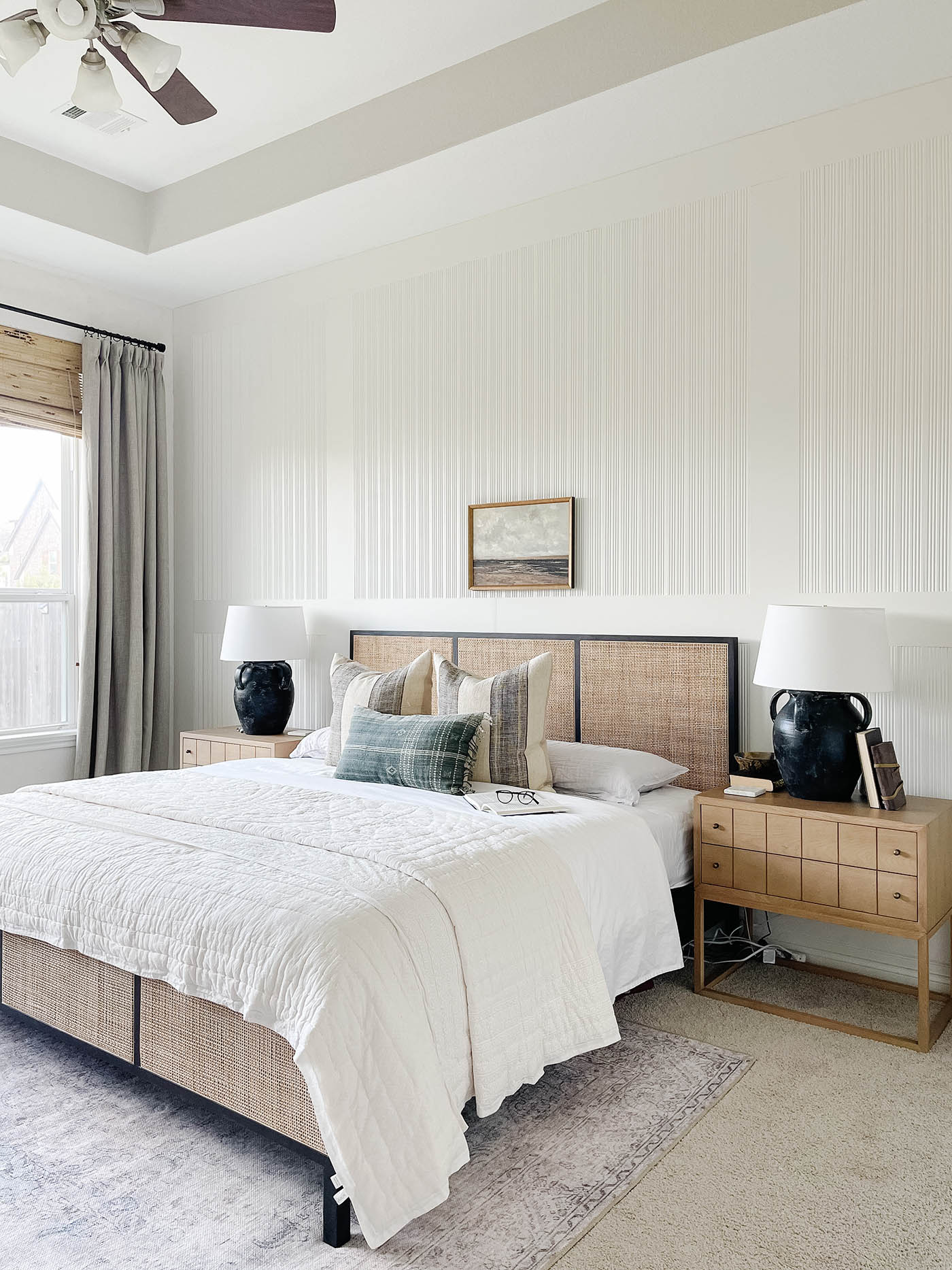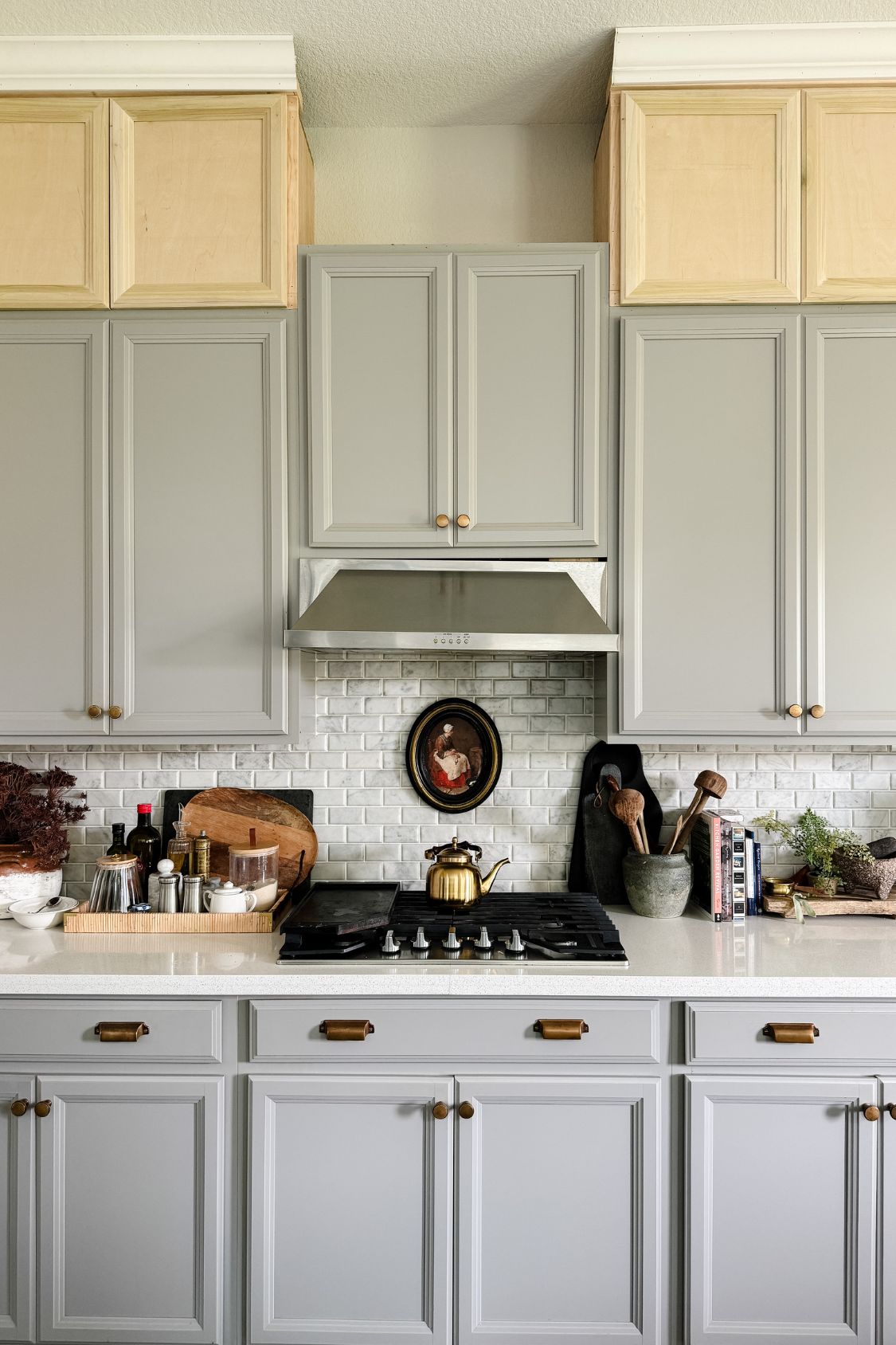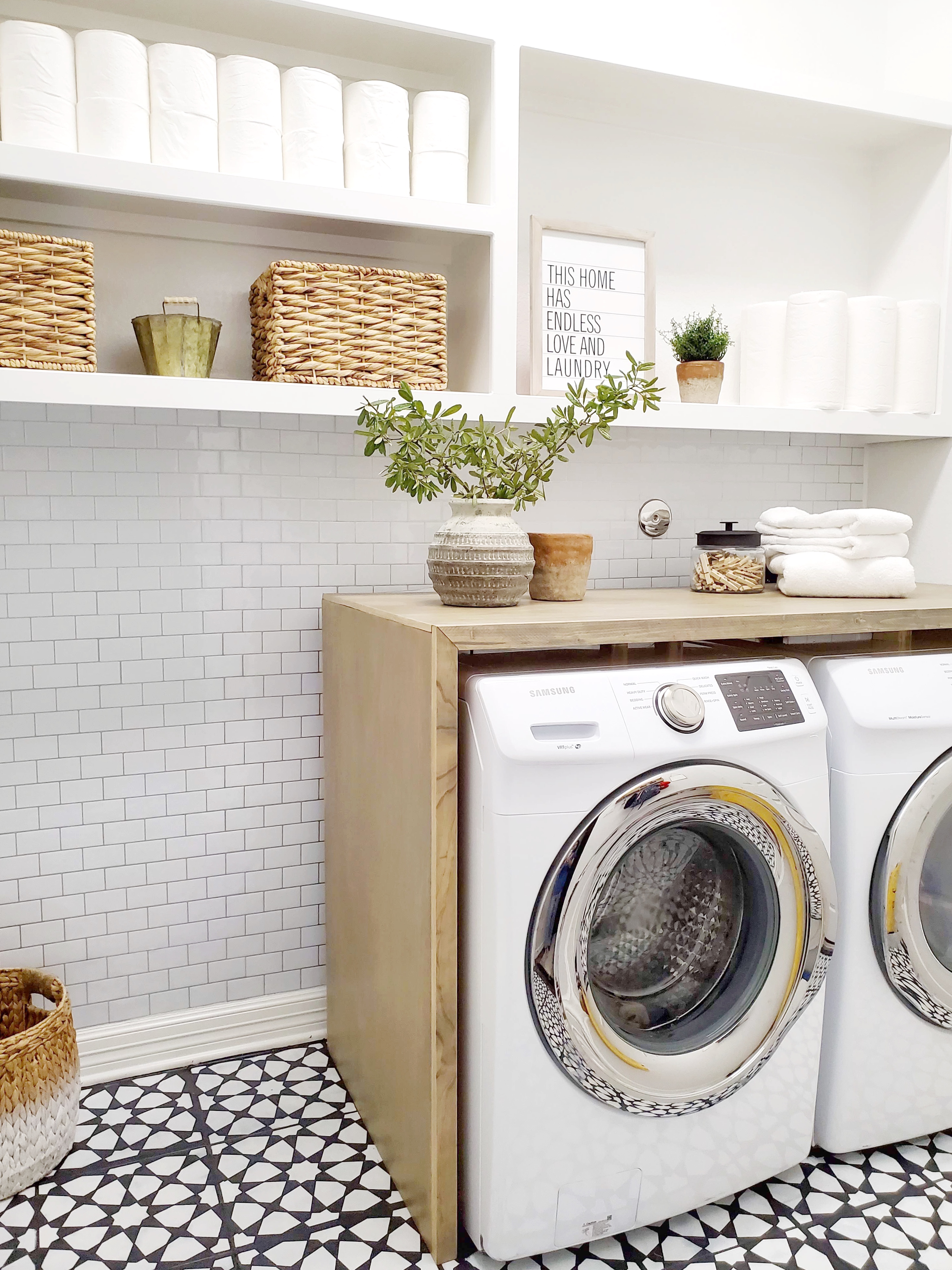DIY Wood Plank Ceiling – A Simple How to Guide
If you’ve ever stared up at your popcorn ceilings and wished they’d disappear, or wanted to bring that warm, farmhouse character into your dining room or laundry room, a DIY wood plank ceiling might be exactly the upgrade you’re looking for.
It’s one of those rare diy projects that looks expensive, feels custom, and can be tackled in a couple hours, with the right prep and patience.
I’ll walk you through every step, from tools to finishing touches, so you can confidently take on your own ceiling transformation.
Why a Wood Plank Ceiling?

A wood plank ceiling doesn’t just cover flaws, it elevates the entire space. Whether you’re hiding popcorn ceilings, warming up an old house, or just craving some visual texture overhead, this project packs serious payoff.
Here’s what I love most about it:
- It works in almost any space. Foyer’s ceilings, great room, laundry room, you name it.
- It covers ceiling joists and imperfections beautifully.
- It looks custom, but it’s totally doable in your own home.
- It plays well with add-ons like faux beams, crown molding, or even acoustic panels.
And yes. It’s beginner-friendly.
What You’ll Need (Materials + Tools)
Before you start, gather everything in one place. A little organization saves a lot of time once you’re up on that ladder.
Materials:
- Shiplap or tongue-and-groove wood planks
- 2″ brad nails
- Wood glue or liquid nails
- Wood filler
- Wood conditioner (for raw wood)
- Blue chalk line
- Crown molding (optional)
- Scrap piece of wood (for tapping planks into place)
- Paint or stain
- Faux beams (optional for a farmhouse character boost)
Tools:
- Stud finder
- Nail gun
- Jigsaw (for light fixtures or can lights)
- Orbital sander
- Paint brush or roller
- Ladder
You’ll find most of this at Home Depot, but you can shop through the links above as well.
Step 1: Prep the Room

First thing: clear the area.
If it’s a bedroom, no need to empty the entire room. Just move what you need to and protect furniture with drop cloths.
In tight spots, shift the mattress and place your ladder right in the bed frame (trust me, it works).
Next up: locate your ceiling joists using a stud finder.
Mark them clearly with blue chalk lines or a pencil. This part matters. You’ll need to hit those joists when securing your boards.
And if you’re planning to paint or stain the wood ceiling planks? Do it now, before installation. Painting over your head = not fun.
Step 2: Install the Ceiling Boards

Here comes the fun:
Start at the Back of the Room
Begin with your first row of planks at the back of the room, moving toward the entrance. That way, any uneven cuts or small gaps end up on the side of the room that’s least noticeable.
Line Up the First Plank
Use your blue chalk line to guide your first board. This row sets the tone for every row after, so take your time.
Add a thin line of wood glue or liquid nails to the back of the board, press it to the ceiling, and secure with a nail gun into each ceiling joist.
Stagger Your Seams
Avoid lining up the ends of the boards. That symmetry actually makes the ceiling look less polished. Instead, stagger them for a more natural, intentional look.
Use a scrap piece of wood and a mallet to gently tap each next board into place. This helps eliminate gaps.
Cut Around Light Fixtures

For light fixtures or can lights, use a jigsaw to cut precise openings. A cardboard template makes this step smoother. As always: measure twice, cut once.
Install the Last Board
Every room has its quirks, and by the time you get to the last board, you might need to trim it for width.
If the cut isn’t perfect, don’t stress. Just hit it with an orbital sander to smooth things out. Crown molding later on will cover any small inconsistencies.
Step 3: Finish It Off

You’re in the home stretch. Now it’s all about the polish.
- Fill nail holes with wood filler, let it dry, then sand smooth.
- Add crown molding to clean up any edge gaps (optional but worth it).
- If using raw wood, apply wood conditioner before staining or painting.
- Use a paint brush or roller to apply your finish evenly.
Tips from Experience

If you’ve never worked overhead before, installing a DIY wood plank ceiling can feel intimidating. But after doing it myself (and making a few mistakes), here are the things I wish I knew going in.
Measure from the Center Beam for Balance
If you’re going for a symmetrical or framed look, especially with faux beams or a feature like a chandelier, start from the center beam and work your way out. This keeps your wood planking balanced and avoids any awkward, narrow cuts near the walls.
Use your blue chalk line to snap straight guidelines, and double-check your measurements from both sides before laying that first row.
Use Ceiling Joists for a Solid Hold
Skip the guesswork: find your ceiling joists with a stud finder, and make sure every first board, next board, and last board is nailed securely into them. This is your structure, especially if you’re skipping furring strips. Nail directly into the joists using your nail gun with 2″ brad nails for a tight, long-lasting hold.
Don’t Obsess Over Small Gaps
A small gap between boards here and there? It’s honestly not a big deal.
Wood expands and contracts naturally with humidity and temperature. Slight inconsistencies add much character, and once you fill the edges with crown molding, they’re often invisible.
Imperfection is part of the charm.
Use a Scrap Piece for Tighter Fits
Getting boards to sit flush without damaging them can be tricky. That’s where a scrap piece of wood comes in handy.
Use it to tap the next board into place without marring the surface of your planks.
A soft mallet helps too, but avoid direct hammering on your finish pieces.
Sand Before Staining or Painting
Raw or rough wood planks often need some cleanup before finishing.
Run an orbital sander over the entire surface before you paint or stain, especially if your planks have mill marks or splinters.
This is particularly important if you’re using weathered oak or reclaimed wood that hasn’t been pre-treated.
Use Liquid Nails on Each Board
Even if you’re nailing into ceiling joists, a line of liquid nails or wood glue on the back of the board adds strength and helps prevent future warping or shifting. It creates a better bond between the plank and drywall or existing ceiling texture (especially over popcorn ceilings).
Pre-Finish Your Boards if You Can
Painting or staining overhead is exhausting and messy. If possible, paint or stain your wood ceiling planks before installation.
Lay them out in a well-ventilated space, finish them all at once, and let them dry completely. You’ll get better coverage, fewer drips, and a much cleaner finish.
Watch Out for Light Fixtures and Wiring

Light fixtures and can lights require careful measuring and cutting.
Turn off the power at the breaker, pull down the fixture base, and use a cardboard template to trace the cutout before using your jigsaw.
If your planks are too thick to sit flush with the fixture base, you might need an extender ring or adjustable canopy.
Use Crown Molding to Hide Edge Gaps
Even if your cuts aren’t perfect near the wall, crown molding hides everything. It gives a clean, finished edge, especially in rooms where the ceiling isn’t perfectly square.
It also lets you work a little faster since you don’t need to obsess over every edge.
For Large Rooms, Take a Break
If you’re working in a great room or another big space, give yourself a day or two. Lifting ceiling boards over your head for hours is tiring, even with help.
Breaking it into zones lets you stay accurate and reduces mistakes from fatigue.
Consider Faux Options for Budget or Speed
If you’re short on time or budget, you can get a similar look with DIY faux wood plank ceiling options like peel-and-stick planks or thin plywood strips. They’re lighter, easier to cut, and save on extra cost. Though you may need to use drywall screws or adhesive panels depending on the weight.
FAQs About Installing a Wood Plank Ceiling

Can I install over popcorn ceilings?
Yes. As long as the texture is stable and not crumbling, it’s actually one of the best ways to hide popcorn ceilings cleanly.
Do I need furring strips?
Only if you can’t reliably hit your ceiling joists. If you’re able to secure directly into them, you’re good.
How long does it take?
Expect a couple hours for a dining room or laundry room. A great room will naturally take more time and patience.
What wood should I use?
That’s a personal preference. I used pre-painted shiplap, but weathered oak or natural pine are also gorgeous for different looks.
Do I need to sand the planks?
If they’re rough or you’re staining them, yes. A quick once-over with an orbital sander goes a long way.
What about light fixtures?
Use a jigsaw to cut openings. Mark carefully and cut slow. It’s easier than it looks
The best part of this entire project? You don’t need to hire it out.
With the right tools, a steady ladder, and this guide in hand, you can build a DIY wood plank ceiling that completely transforms your space.
Whether you’re upgrading a single room or reimagining an old house, this is one project that’s worth every bit of effort.
The best part of this project? It’s totally doable in your own home with just a little patience and planning. A DIY wood plank ceiling adds warmth, charm, and major impact—and you don’t need to be a pro to pull it off.
Whether you’re renovating an old house, updating a foyer’s ceilings, or just looking for your next big DIY project, this guide should give you the confidence to get started.








